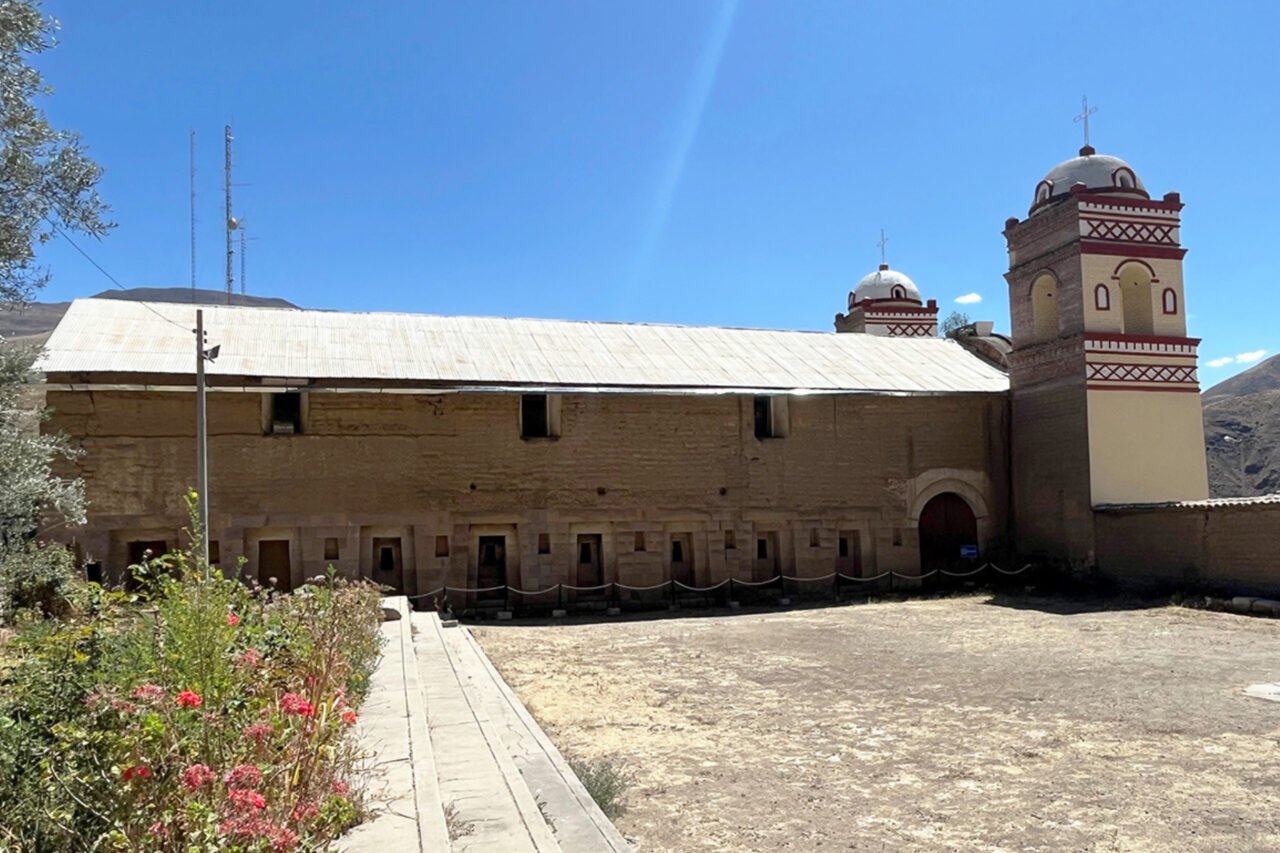Science
Researchers Uncover Acoustic Secrets of Ancient Incan Structure

In the remote town of Huaytará, Peru, a remarkable discovery is unfolding as researchers investigate the acoustic properties of a unique ancient Incan structure known as a carpa uasi. This three-walled building, which forms the foundation of the Church of San Juan Bautista, offers insights into the Inca civilization’s appreciation for sound, a dimension often overlooked in discussions of their architectural achievements.
Researchers, led by Stella Nair, an associate professor of Indigenous arts of the Americas at the University of California, Los Angeles, are exploring the potential of the carpa uasi to amplify low-frequency sounds, such as drumming. Nair explains, “We’re exploring the possibility that the carpa uasi may have amplified low-frequency sounds, such as drumming, with minimal reverberation. With this research, for the first time, we’ll be able to tell what the Incas valued sonically in this building.”
The Inca Empire, flourishing in the 15th and early 16th centuries, was known for its impressive architectural feats, including the famed citadel of Machu Picchu. Yet the carpa uasi, which translates to “tent house,” demonstrates a different aspect of Incan ingenuity. Unlike typical structures, this building features only three walls, allowing sound waves from instruments to be directed outward, potentially creating an immersive auditory experience.
Exploring the Significance of Sound in Incan Culture
Nair highlights the significance of sound in the cultural landscape of the Inca, stating, “Many people look at Inca architecture and are impressed with the stonework, but that’s just the tip of the iceberg. They were also concerned with the ephemeral, temporary and impermanent, and sound was one of those things.” The builders’ willingness to sacrifice stability for acoustic potential underscores the importance of music and sound in their society.
Although researchers have long acknowledged the existence of the carpa uasi, Nair and her colleagues are among the first to recognize its potential for enhancing sound. Remarkably, this structure has survived for over 600 years, largely due to the stability provided by the church built atop it. The team is now developing a model to illustrate how sound would have propagated through the carpa uasi and beyond, offering a new perspective on Incan life.
Revisiting History Through Sound Studies
Nair emphasizes the critical role of sound studies in understanding historical contexts, stating, “Sound studies are really critical, because we tend to emphasize the visual in how we understand the world around us, including our past. But that’s not how we experience life—all of our senses are critical.” This shift in focus could transform how we perceive and study ancient civilizations, providing a richer understanding of their experiences and cultural values.
As the research progresses, the findings promise to reshape perceptions of the Inca Empire, revealing a society deeply attuned to the auditory landscape of their environment. This exploration not only honors the legacy of the Incas but also invites contemporary audiences to appreciate the multifaceted dimensions of history, encouraging a broader engagement with the past.
-

 Science2 weeks ago
Science2 weeks agoIROS 2025 to Showcase Cutting-Edge Robotics Innovations in China
-

 Politics2 weeks ago
Politics2 weeks agoJudge Considers Dismissal of Chelsea Housing Case Citing AI Flaws
-

 World2 weeks ago
World2 weeks agoBravo Company Veterans Honored with Bronze Medals After 56 Years
-

 Top Stories2 weeks ago
Top Stories2 weeks agoIndonesia Suspends 27,000 Bank Accounts in Online Gambling Crackdown
-

 Lifestyle2 weeks ago
Lifestyle2 weeks agoStone Island’s Logo Worn by Extremists Sparks Brand Dilemma
-

 Sports2 weeks ago
Sports2 weeks agoMel Kiper Jr. Reveals Top 25 Prospects for 2026 NFL Draft
-

 World2 weeks ago
World2 weeks agoHoneywell Predicts Record Demand for Business Jets Over Next Decade
-

 Health2 weeks ago
Health2 weeks agoStartup Liberate Bio Secures $31 Million for Next-Gen Therapies
-

 Health2 weeks ago
Health2 weeks agoTop Hyaluronic Acid Serums for Radiant Skin in 2025
-

 Politics2 weeks ago
Politics2 weeks agoNew Jersey Voters Urged to Register Ahead of November Election
-

 Sports2 weeks ago
Sports2 weeks agoYamamoto’s Mastery Leads Dodgers to 5-1 Victory in NLCS Game 2
-

 Lifestyle2 weeks ago
Lifestyle2 weeks agoMary Morgan Jackson Crowned Little Miss National Peanut Festival 2025







